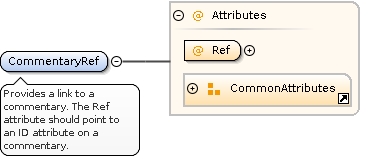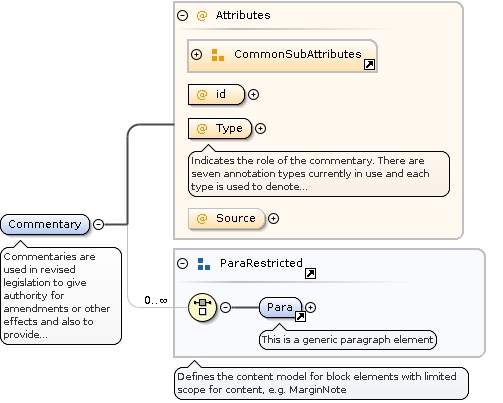| Namespace | http://www.legislation.gov.uk/namespaces/legislation | ||||||||||||||||||||||||||||
|
Annotations
|
Provides a link to a commentary. The Ref attribute should point to an ID attribute
on a commentary.
|
||||||||||||||||||||||||||||
|
Diagram
|
 |
||||||||||||||||||||||||||||
|
Properties
|
|
||||||||||||||||||||||||||||
|
Used by
|
|
||||||||||||||||||||||||||||
|
Attributes
|
|
||||||||||||||||||||||||||||
|
Source
|
|




